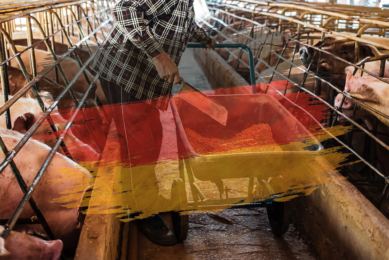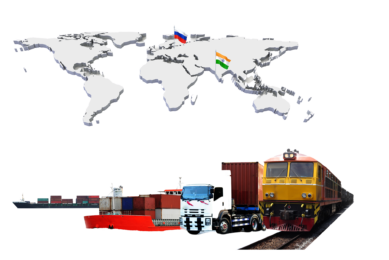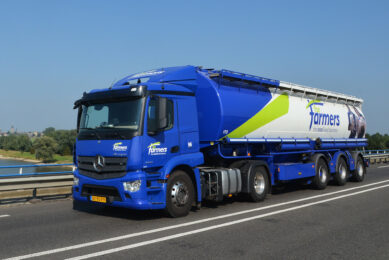Weekly feed business update

New feed products, factories, mergers and acquisitions, conferences and much more. All About Feed wraps up the latest updates and new business developments from the global feed industry.
Olmix Group open first factory in Asia
Feed additive producer Olmix officially opened its 1st factory in Asia. The factory , located in Binh Duong province, Vietnam, will be providing approximately 15,000 tons of animal feed additives and nutraceuticals for feed mills and farms per year. The opening of this new production facilities is a milestone on the Olmix Group’s road towards a prosperous growth in Asia. It also represents the Olmix Group’s commitment to further strengthening the presence and activities in Vietnam and throughout Asia. Starting its production from 1st November 2017, the factory will be focused on producing new feed additives to be provided to the Asian market, such as mShell (shell and bones quality enhancer) and ASEAD (range of innovative acidifiers).
Farmers by plane with the Alltech Euro Tour
Last November, a group of 130 dairy farmers from 7 countries embarked on a European tour of dairy farms with Alltech to learn about new innovations and different approaches being adopted by farmers. Visiting 7 different dairy farms in Germany, the Netherlands, France and Ireland over the 4-day journey, the tour also provided a networking opportunity for farmers to discuss and share ideas about the future of dairy production. The host farms included a German farm near Berlin called Milsana, which has 3,600 cows. In addition to farm tours, the group heard presentations on the global dairy market outlook from Dr Markus Fahlbusch from the University of Göttingen in Germany as well as the impact of digital technologies on dairy farming from David Hunt, CEO of Cainthus.
European contest for insect based fish feed solutions
INvertebrateIT is an innovative project funded by the EU to work towards sustainable aquaculture using invertebrates. Until January 15th, INvertebrateIT is open for proposals from SMEs relating to invertebrate-based feed solutions for aquaculture, with opportunities for funding, technical support and business support. Ten projects will be short-listed by the project partners of INvertebrateIT, and promoted by the partnership via their communication channels. Three projects will then be awarded by an expert jury, following the evaluation criteria and procedures. The winning projects will receive support in their development to a pre-commercial level. To find out more about the application process, please click here.
BioMar invests in the shrimp market
Just 2 months after confirming the acquisition of Ecuadorian feed manufacturer Alimentsa, BioMar announced the establishment of a new trial facility for shrimp. The new investment confirms the previous announcements from BioMar stating that high-performing diets and functional feeds for shrimp will be an important part of BioMar´s portfolio. BioMar CEO Carlos Diaz explains: “This is a part of our overall expansion strategy. We basically take the required decisions to build a strong, competitive and innovative foothold in the shrimp market. The investment in Ecuador is a tangible outcome of a much greater plan for innovation in BioMar. The global R&D budget will increase by roughly 20% in 2018, which comes on top of a dedicated global set-up for R&D implemented over the last years. Ecuador has developed into one of the most important shrimp producing nations and has in many aspects taken alternative roads. This makes it a very interesting hub for product development”. BioMar has already been supplying shrimp grower diets from Costa Rica and shrimp larval diets from France to customers around the world. The company will also within a few months launch its’ shrimp range in China.
New book on INRA feeding system ruminants
Wageningen Academic Publishers has launched a new book: ‘INRA feeding system for ruminants’. The book is edited by Gaetano Martino, Konstantinos Karantininis, Stefano Pascucci, Liesbeth K.E. Dries and Jean Marie Codron. The INRA Feeding System for Ruminants has been renewed to better address emerging challenges for animal nutrition: prevision of productive responses, product quality, animal health and emissions to the environment, in a larger extent of breeding contexts. This book presents the whole system for dairy and meat, large and small ruminant production, including specificities for tropical and Mediterranean areas. The book can be ordered here.
Proagrica rolls out agri-food supply chain of Agility
Leading data insight company Proagrica, part of the global RELX Group, and publisher of All About Feed, launched the roll-out to the agri-food supply chain of Agility, the revolutionary data platform which collects, aggregates, cleans and delivers accurate and timely data from multiple trusted sources. Agility is already giving businesses, across the agriculture supply chain, competitive advantage through actionable insights and data analytics to see: What success factors and limitations are driving their business? Why did they happen and what data-sets can identify them? What identified areas in their control can they and/or their key partners improve? And how can actionable data ensure these improvements are qualified and developed? Already in use by major international businesses, Agility is now being implemented in Europe, North America, and Australasia.
Cornell University to test calcium binder in cows
Cornell University tested the efficiency of a calcium binder (X-Zelit®) for preventing hypocalcemia. Feeding low level calcium in the pre-partum diet has shown to be effective in improving the calcium level at calving. However, as this is difficult to obtain using the commonly used feeds, binding the dietary calcium using a calcium binder can mimic the low calcium approach. Preliminary results from the trial were presented at the annual Cornell Nutrition Conference 2017 and the overall conclusion was that X-Zelit markedly improved calcium status during the peri-parturient period. The X-Zelit product has been on the market in Europe and Canada since 2008. Just recently it has been launched in the USA and worldwide. X-Zelit is a product of Vilofoss.
Succesfull GMP+ International 25th Anniversary Conference
There must be traceability within the feed chain, but how much transparency should there be? And how does the sector strike a balance between a big data overkill and usable information? Those were some of the key questions that were discussed at GMP+ International’s 25th Anniversary Conference on November 1-3 at the Beurs van Berlage in Amsterdam, the Netherlands. Keynote speaker Horst Lang, Head of QA & Environment at Globus, a German retail chain said: “Sharing information guarantees more safety. Yet in some quarters of the sector track & trace is still lacking. That should be unheard of these days.” As the second keynote speaker on the first day, Angela Booth, Director of Feed Safety at AB Agri (UK), agreed. “What keeps me awake at night is: what’s coming through the gates? The supply chain is still a challenge. There are so many elements we have to understand and control. Products are shipped, stored, and shipped again. And this only will get more.” Booth argued in favour of more professional knowledge transfer with regards to feed safety management. Working together and sharing information were prevalent again on day 2 of the conference, when Leo den Hartog, (Director R&D and Quality Affairs at Nutreco, the Netherlands), Dries Berckmans (KU Leuven and CEO at Soundtalks, Belgium) and Stanley Oliveira (Embrapa Informatica Agropecuaria, Brazil) held their keynotes about how big data will challenge and secure feed safety. Their addresses lead to an animated debate with the audience and other experts on stage about the importance of transparency, the opportunities of data management to realize it, the ownership of data and the question of how much data would be enough. “Data in the end is just data”, Berckmans said. “What we need is useful information. And therein lies the challenge.” Den Hartog fears the possibility of a data overkill. “One risk is that we randomly start gathering data and start calculating, and then drawing wrong conclusions as a result. We have to start with setting clear goals.” According to Ruud Tijssens, Member of the Executive Committee at International Feed Industry Federation (IFIF), the discussion should not primarily be on what information should be shared with whom, but first and foremost about trust. “Take the discussion about soy. Even if your soy for 80% comes from areas that were not deforested, the discussion will not go away. It is so complex. We need dependable systems that prove responsible production”. The full review of the event can be read here.
Spanish maize and UK wheat tested for mycotoxins
Feed additive producer Nutriad tested maize samples from Spain and wheat samples from the UK and Ireland for the presence of mycotoxins. 121 maize samples from across Spain were tested for aflatoxin B1 (AfB1), zearalenone (ZEN), deoxynivalenol (DON) and fumonisins (FUM) (sum of fumonisin B1 and fumonisin B2). It was concluded that the year’s harvest of maize in Spain was of medium quality (>LOQ but below EU recommendation levels) in terms of mycotoxin contamination (DON, ZEN, FUM). The exceptions were the very high average and the maximum concentrations of aflatoxin B1 which clearly exceeded the concentration of aflatoxin B1 permitted in the EU in feed materials. 51 wheat samples from across Great Britain and Ireland were tested for AfB1, ZEN DON, T-2 toxin, HT-2 toxin, fumonisins (FB1 + FB2) and OTA. The results show that 74.5% of wheat samples were contaminated with DON and none of the samples contained AfB1, T-2 toxin, HT2-toxin nor FUM. The average concentrations of all identified mycotoxins were medium while the highest concentration of DON found in one of the samples reached 1180 μg/kg. Although 35% of the samples were contaminated with ZEN, a mycotoxin affecting reproductive functions of all animal species, its average concentration was negligible at only 38 μg/kg. However, the maximum concentration of ZEN found in one of the samples was 164 μg/kg and this level may be significant for sows, boars and piglets. As expected, none of the samples were contaminated with OTA. When comparing DON and ZEN contamination levels of wheat in the years 2014, 2015, 2016 and 2017, the contamination levels in 2017 are significantly higher than in the 3 previous years.











